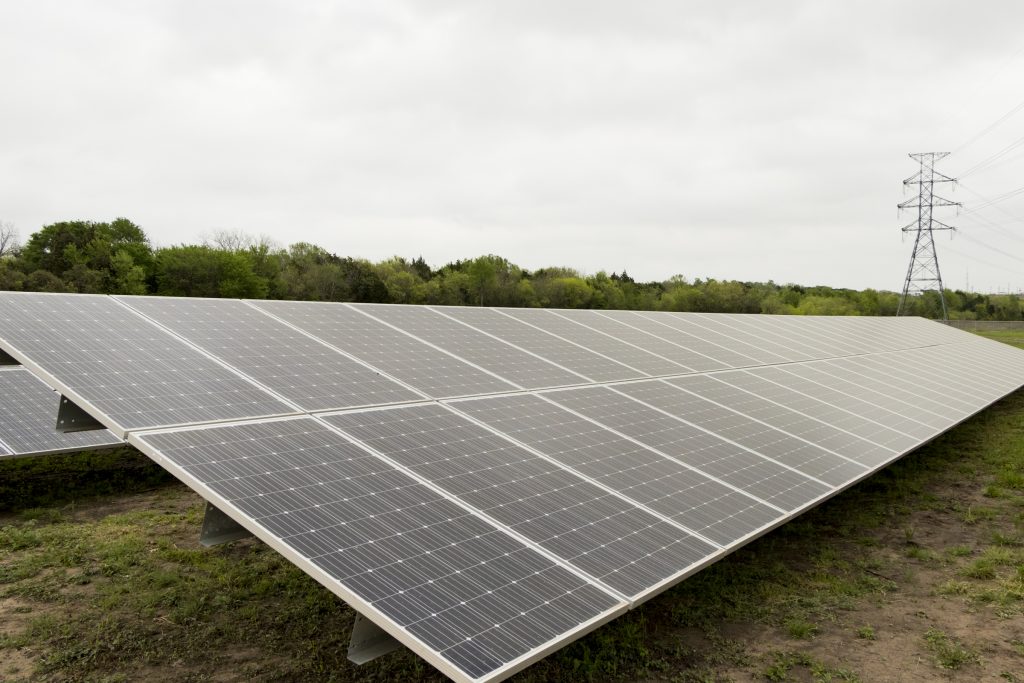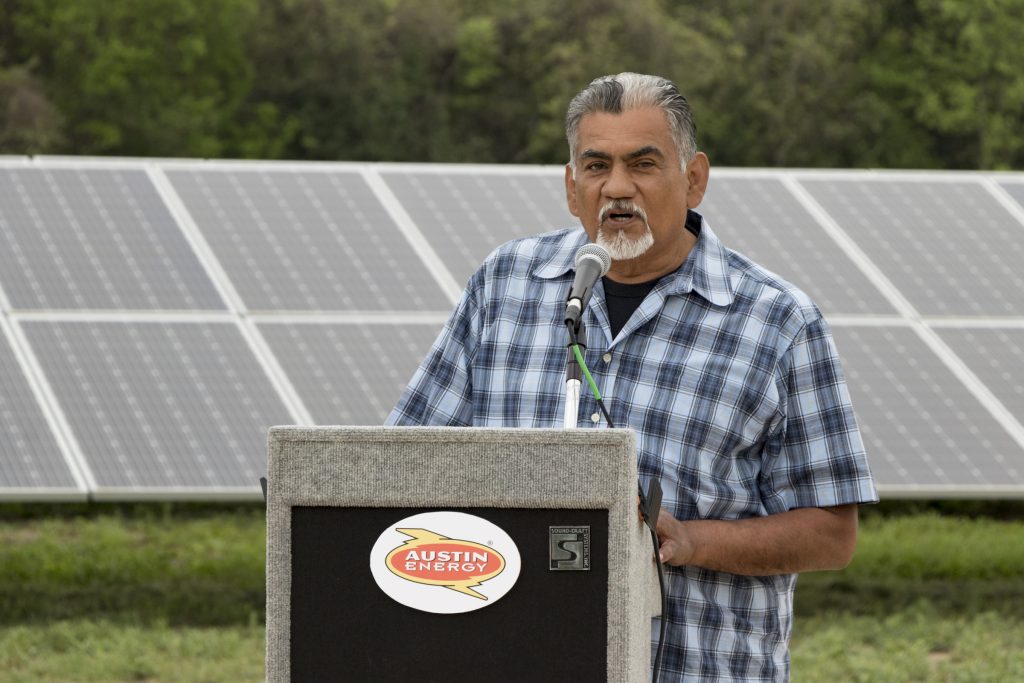Guest Editorial – from Al Braden
Al Braden is a local environmental activist and photographer.
Last month marked the “Community Solarbration” festivities as Austin Energy opened Texas’ largest community solar project after years of community organizing in the Springdale Airport neighborhood to ensure the facility benefited the people living around it.
Built with 9,054 solar panels, it can provide 2.6 megawatts of electricity, or enough to power 400 homes.
Half of that output is reserved for low income customers (through the CAP Plan) at about a quarter cent lower per kwh (kilowatt-hour) than existing rates. There were still a few slots left at that rate on opening day. Neighborhood leaders and environmental organizations, including the Sierra Club, worked hard to set this rate so that community members could participate in the benefits of this project in their own backyard. Rates are locked in for 15 years. Even as other Austin Energy rates increase in the future, the La Loma solar customers will benefit with this original low rate.
For non-CAP customers, the rate is about 1.3 cents per kwh higher than the current Power Supply Adjustment (PSA) price on AE bills, but it is likewise protected against future rate hikes. The non-CAP program is sold out and has a waiting list. That is important because a backlog of customers indicates to AE a stronger demand to build more community solar. I encourage everyone to sign up for community solar on the AE website.
Build the waiting list that will build more community solar!
In addition, La Loma has a 1.6 MW battery pack – allowing it to store power for later use and/or stabilize the local electric distribution network on a moment-to-moment basis. This battery – (think the size of a railroad freight car) – is next door at the Kingsbury substation where La Loma connects to Austin’s grid. Both the community solar project and the battery pack are being monitored by Austin Energy to gain real time experience with solar and storage working together to build more renewable energy in Austin.
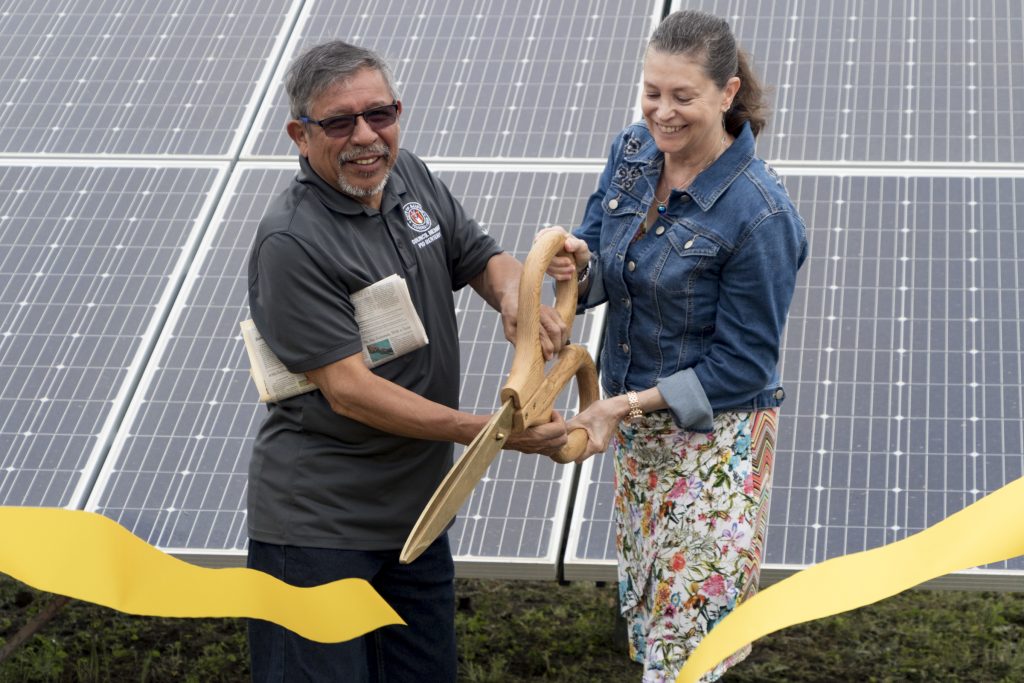
Council Member Pio Renteria of District 3 and AE General Manager Jackie Sargent cut the ribbon signifying the opening of La Loma Solar.
It would be a disservice to speak of the La Loma solar farm without highlighting the tireless work of community leader Pete Rivera and ATXEJ (even though that’s what almost happened when Pete was left out of the planned speeches during the grand opening celebration).
We he did speak at the celebration last month, Rivera spoke about the community involvement in the project. This is where the story moves beyond the numbers of megawatts and policy aspects to the real involvement and pressure from the community to ensure that AE made the benefits of solar energy accessible.
It’s important to know that Rivera’s house, where he’s lived for 57 years and has been in his family for generations, is just behind this bank of solar panels. La Loma is essentially his backyard. The project site is city land owned by various departments that has not been well cared for in many years.
When the solar project was first proposed, Rivera saw that it would cut off the primary path that neighborhood kids use to walk to Eastside Memorial High School after crossing the active railroad tracks and steep cement-lined creek bed. The alternative routes involved long hikes around to Ed Bluestein Blvd (SH 183) or up to Springdale, then down Airport Blvd. and back by Bolm Rd.
Students had been crossing East Boggy Creek for generations, but it was far from a safe daily route. As president of the Springdale-Airport Neighborhood Association (SANA), Rivera saw the need for a bigger vision in the East Boggy Creek Greenbelt to serve the needs of his East Austin neighborhood. As he saw it:
- The La Loma Community Solar Project should offer renewable energy at rates that would benefit the local area.
- A safe path around the solar project should include safe passage over the railroad tracks and creek bed.
- A better park plan in the East Boggy Creek Greenbelt should serve the needs of his Springdale neighborhood.
- Park trails to Red Bluff, an iconic neighborhood vista that looks west to downtown Austin, should be cleaned up and refined for community access as a city park.
By 2016, as AE was beginning the design of the La Loma project, Rivera began drawing attention to his vision. As president of SANA, Rivera teamed with local environmental groups including the Sierra Club, ATXEJ, and Public Citizen to bring awareness to both the risks to kids, the beauty of the area, and the environmental racism inherent in the neglect of Red Bluff. Vanessa Ramos and Max Anderson (videographers and organizers with ATXEJ) produced some great video work to show Austin City Council and to bring people out on hikes to see the area first hand.
RED BLUFF: 50 years of dumping on ‘East Austin’s Mount Bonnell’ from V&M Productions on Vimeo.
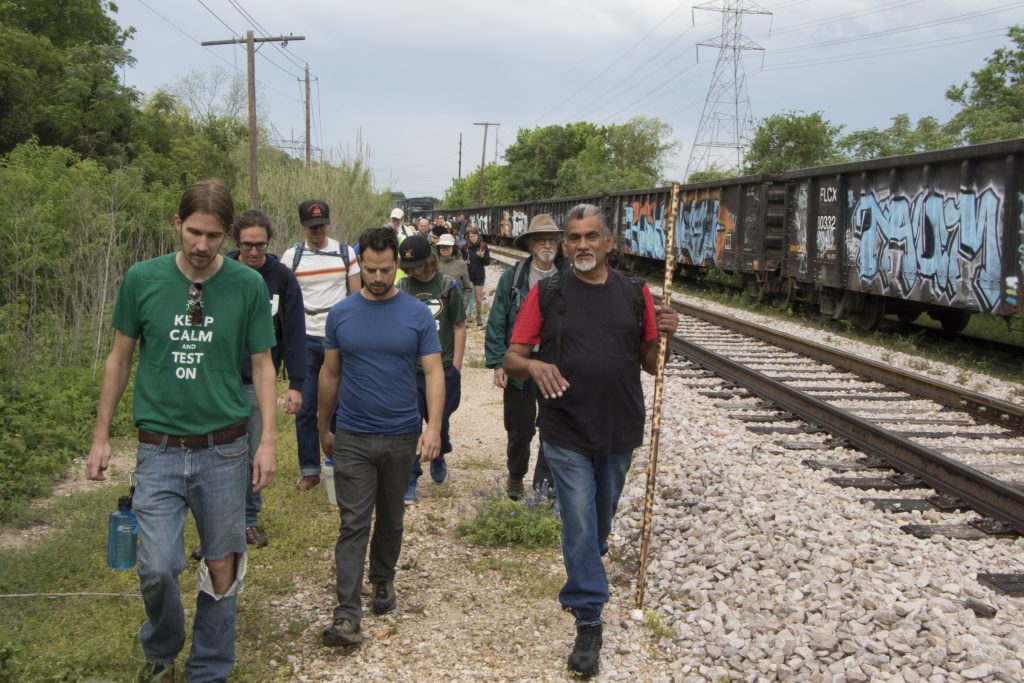
Pete Rivera leads a 2016 hike with local activists along the rail line to Eastside Memorial High School. The tracks are usually full of parked rail cars, but one never knows when crawling between them if they might move. The trail then leads down a cement embankment crossing East Boggy Creek.
Decades old trash along the trail to Red Bluff was finally cleaned up by city workers after Rivera, SANA, Sierra Club, ATXEJ, and others worked with Austin City Council to draw attention to the mess.
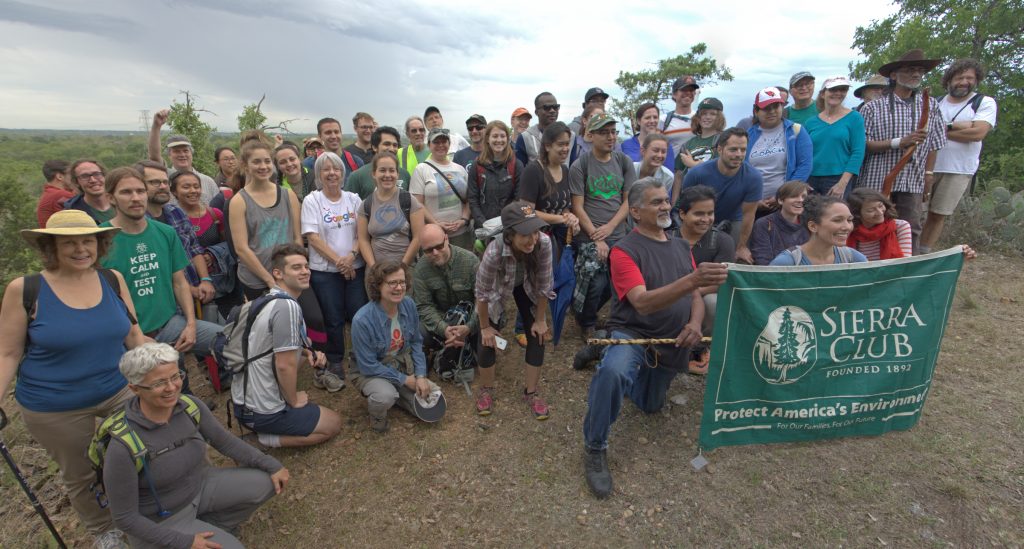
Following trails blazed by Rivera and his brothers, activists reached Red Bluff which gives great views of the area and the Austin skyline in the distance.
For the neighborhood, La Loma Solar is a step in the right direction of bringing the city’s attention to the area (equal attention as any public amenity in West Austin) and making the facility a part of a larger system of trails and parkland that are a source of power, enjoyment, and pride in East Austin. In the context of the widespread gentrification of East Austin, as residents with long-standing families are priced out of their homes to make way for the next massive tech building or the next Whole Foods 360 complex, this “win” is a bittersweet one.
Plans for the rail and creek crossing are being worked on along with a larger park plan for the area. Stay engaged.
Please note – editorials and sponsored posts are written by guest writers to inform and educate the community on a variety of different viewpoints, as well as to share information about local eco-friendly businesses and organizations. However, they do not necessarily reflect the opinions of the Austin EcoNetwork.



